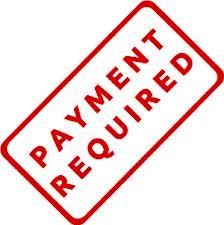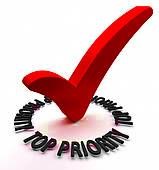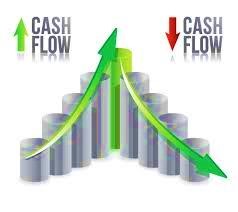5 Ways to Improve Cash Flow
With revenue still something of a pipe dream for most businesses, owners are looking for ways to maximize as much cash flow out of their current operations as possible.
It’s a simple enough formula: collect your receivables as fast as possible and slow down your payables without jeopardizing your relationship with suppliers.
Still, some companies are much better at it than others: Top-performing companies collected from customers 21 days more quickly than typical companies in 2013 and stretched payables by an additional 14 days, according to REL, a consultancy group who studies annually the working capital of the top 1000 companies in the US.
If you are looking at a quick solution, you can extend your payment period by using a credit card to pay suppliers. This is not a recommended solution for a growing company, but can be implemented easily. This will increase your “float” the time between when someone deposits your check and when the amount is removed from your account from a few days to a few weeks. Remember, that if you do pay with a credit card you will want to pay the balance in full each month. Otherwise and gains will be offset by typically high interest rates associated with credit cards.
That’s a simple – and fairly short-sighted – solution. But if you’re serious about improving cash flow, here are five items we suggest looking into.
1. Complete a Projection
In order to get a handle on your cash flow you need to know where it currently stands and where it is likely to go in the future. Small and medium sized business often struggle with the costs associated with rapid growth. More sales could mean more employees and a bigger inventory. That’s money going out upfront. But when will it return? Too many companies are negatively impacted by unforeseen fluctuations in cash that could be projected.
Most major fluctuations can be predictable with some certainty, if companies sat down and thought it though. A forecast could be as simple as paper and pencil for the smallest company, most companies are going to want to put together a more formal cash flow projection.
Incorporating a rolling 12-month forecast is the best practice for most companies. Once you start looking at things on a weekly or monthly basis, you will know when to expect surges in expenses ahead of your big sales season. It will also show when you have several payments due in a short period of time. Properly forecasting these events can help you plan your cash flow situation and help prevent cash shortages.
2. Evaluate Your Terms
Since we have determined that collecting cash is the name of the game, take a hard look at your customer terms and your supplier terms.
If you find that on average it takes you 43 days to collected payment and your average payable is 21 days, you have 22 days of float. Now you need to go out and find working capital to bridge the gap.

Items to consider when trying to manage your collections and payments:
- Can I offer an early pay discount? Meaning what percentage would I be willing to discount the receivable in order to receive cash faster.
- Are there alternate suppliers who provide better payment terms that would better suit my companies cash flow needs. If Company A offers Net 30 terms and Company B offers Net 15 terms, how much do those 15 days cost you?
- Am I extending credit to customers that are not credit worthy and possibly creating a collectability issue down the road. Depending on the size of your organizations sales it may be beneficial to look into pulling credit reports on your Customers or possibly credit insurance. We recommend asking the Customer for a list of trade references and the contact info of their banker. If they hesitate to give you this it would be a huge red flag.
3. Enforce Payment Discipline
In order to shorten the amount of time it takes for you to get paid, you’ll need to have a good collection process in place. To determine the effectiveness of the system ask yourself:
-How long does it currently take for me to get paid?
-What is my current collection activity?
-Are we identifying potential disputes fast enough, and what is our policy on resolving disputes?
Keep in mind that these are not only ways to improve how quickly you get paid, but your customer service as well. Issues with invoicing or other items can lead to additional time for added to customers getting you paid on time.
Your collection policy should not focus exclusively on balances outstanding greater than 90 days. You need to be on top of balances almost immediately after they become delinquent. You need to establish a process that gently reminds customers that their balance is now past due and that you are watching it.
The management of payables is not only applicable to your company getting paid, but also your company paying its obligations. Many times companies are in the same situation you are in and will offer early pay discounts for prompt payment. These discounts can ultimately add cash to your pocket. Habitually paying your bills late can also have negative consequences in terms of interest charges or reduced flexibility in payment terms down the roads.
4. Segment Your Customers, Suppliers and Inventory
We recommend segmenting your efforts to improve cash flow into three categories, supplier, customers and inventory. You will approach each of these segments differently when improving your overall cash flow.
Inventory: You will want to analyze the fluctuation in sales to determine if there are certain points in time when you have too much cash tied up in inventory. Could you better time purchases to match the seasonality of sales? Do you have the right inventory on hand at the right time?
Suppliers: We recommend looking that your suppliers in two different buckets, regular suppliers and one-off suppliers. With your regular suppliers, you’ll get to a point where it is mutually beneficial for both parties to negotiate better terms or discounts. You will receive better pricing and the supplier will receive a customer who pays their bills on time and is easy to work with.
Customers: Perhaps most importantly, you should take a close look at your customers. There is often a discrepancy between who management determines to be a “key customer” and who the sales team considers a “key customer.” An account that generates a lot of revenue does not always correlate to high profitability. Typically, these customers know they are a large source of revenue for your business and consistently stretch terms and other items that have a negative effect on profitability. We don’t recommend cutting the account, but approach the customer with the situation
5. Make it a Companywide Priority

If improving cash flow is a priority, make sure all of your employees understand that. Also make sure they know how they can help the company reach these goals. General Managers need to evaluate arrangements with vendors, not only are they getting the best price, but could they get better payment terms or discounts for early payment. Implement a policy where savings generated by vendor negotiations are shared with General Manager.
Sales staff should also have goals associated with the collectability of their sales. A customer may be the highest revenue generating customer, but if they are consistently late to pay or hard to deal with, are they your best customer. Site metrics for collectability, implement a policy where bad debt that is written off is backed out of sales commissions.
Like many aspects of business these items need to be track able and measurable and shouldn’t tax the employee with large amounts of time spent implementing them. However, having positive and negative consequences for meeting goals or certain metrics will resonate more with employees than just speaking about it.
If managing your business cash processes or implementing some of these ideas are something of interest to you please feel free to email us or call to see if we can help.

